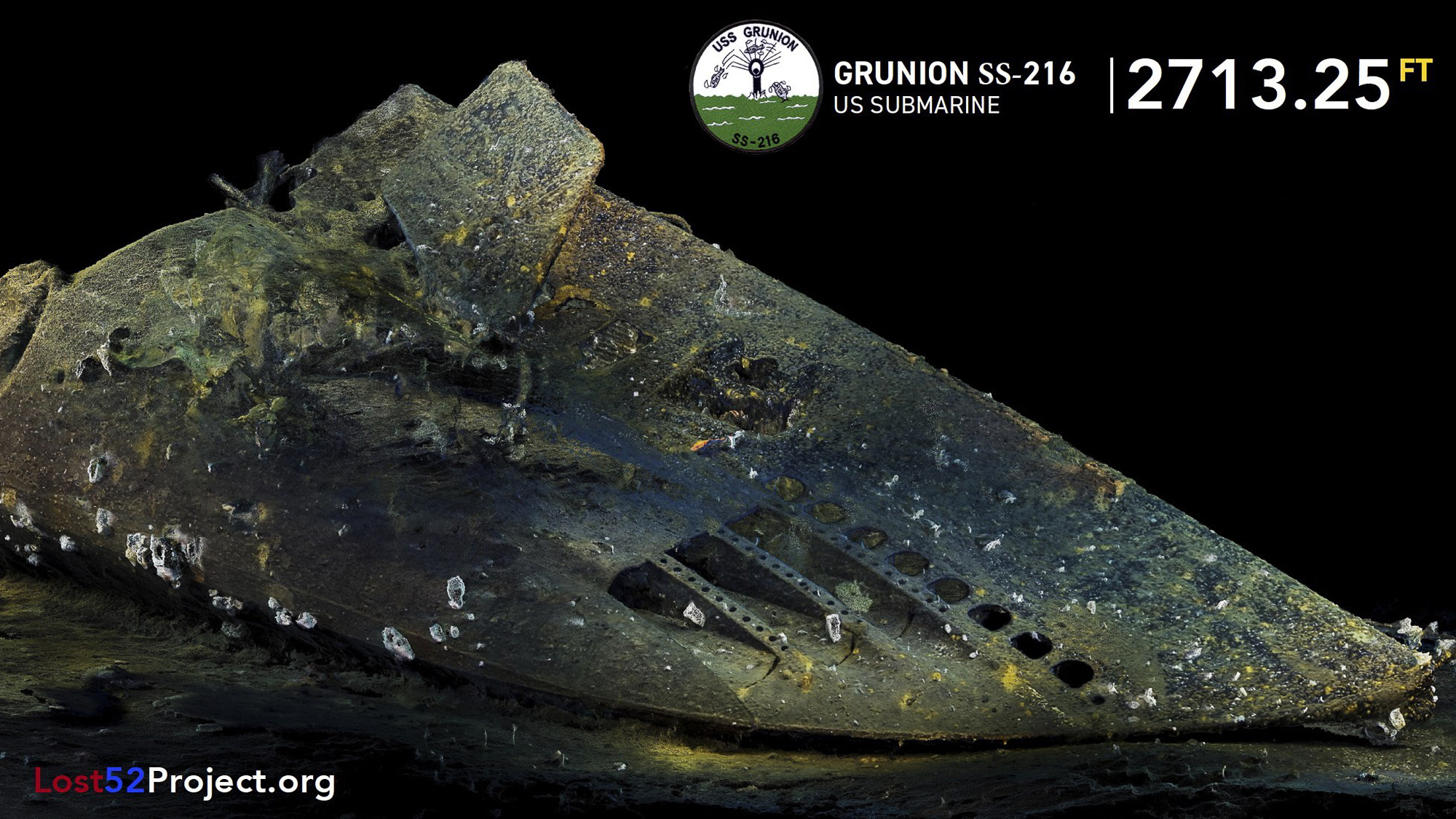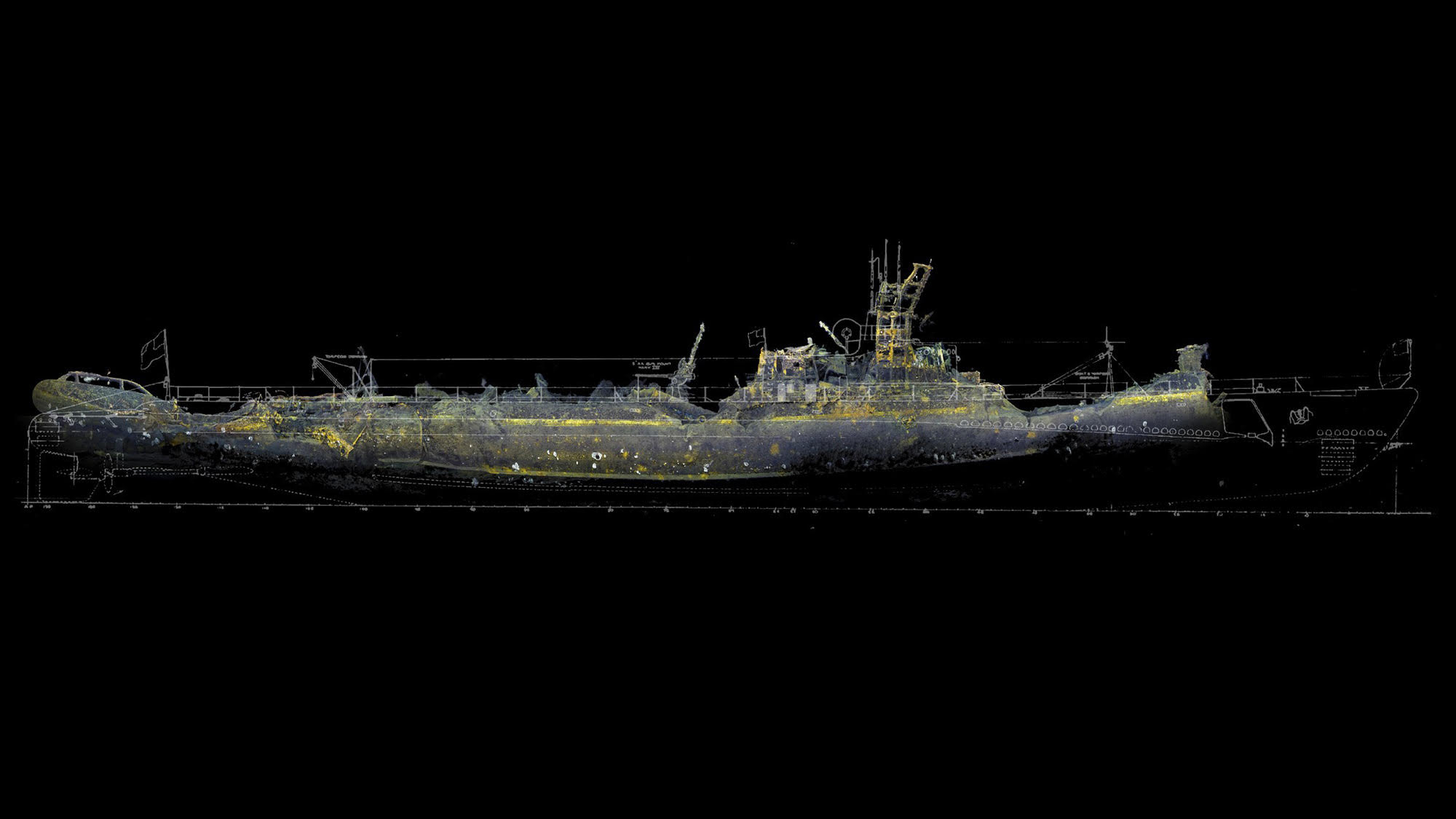US Submarine That Vanished on 1st Mission in WWII Is Found Off Alaskan Islands

Nearly 80 years ago, the USS Grunion submarine sank on its inaugural mission during World War II, taking the lives of 70 sailors with it as it plunged to the bottom of the Pacific. Now, after years of searching, a team looking for WWII-era submarines has found the Grunion's bow about 2,700 feet (820 meters) under the water's surface, off the coast of the Aleutian Islands in Alaska.
Upon finding the long-lost bow, the team used autonomous underwater vehicles (AUVs) and advanced photogrammetry imaging to create 3D images of the underwater vessel.
"This goes so far past video or still imagery, it truly is the future of recording historical underwater discoveries," ocean explorer Tim Taylor, of the Lost 52 Project, a group searching for the 52 submarines that went missing during WWII, said in a statement. [Photos: WWII Shipwrecks Found Off NC Coast]
Taking these detailed 3D images is useful to science, as "archaeologists and historians [can now] spend months back home performing detailed research," Taylor noted.

The United States commissioned the USS Grunion on April 11, 1942, putting it under the command of Lt. Cmdr. Mannert Abele. The submarine helped the Allied forces from the get-go; when the sub was traveling from the Caribbean to its first posting at Pearl Harbor, it rescued 16 survivors from the USAT (United States Army transport ship) Jack, which had been torpedoed by a German U-boat.
The USS Grunion's first war patrol, however, was also its last. In June 1942, the submarine was sent to the Aleutian Islands. Once in Kiska, Alaska, the sub sank two Japanese patrol boats. Then, on July 30, the USS Grunion was ordered back to Dutch Harbor, Alaska, the naval operating base in the region. Along the way, the Grunion ran into disaster and was never heard from again. The submarine was declared lost on Oct. 5, 1942.
But the Grunion's story didn't end there. In 2006, Abele's three sons — Bruce, Brad and John — began searching for the sub's remains after receiving a tip from "a remarkable Japanese gentleman, Yutaka Iwasaki, and help from numerous other sources" according to the Lost 52 Project. The brothers enlisted in the services of Williamson & Associates, a marine geophysics and ocean engineering firm, as well as a side-scan sonar, a system that can create images of large areas on the ocean floor, which helped them locate the missing submarine.
Sign up for the Live Science daily newsletter now
Get the world’s most fascinating discoveries delivered straight to your inbox.
The submarine's bow was missing, however. In October 2018, the Lost 52 Project searched the vicinity and discovered the bow had slipped down a steep volcanic embankment, about a quarter mile (0.4 kilometers) from the main wreckage, Taylor told CNN.
To give families, the Navy and researchers a glimpse of the submarine, the Lost 52 just released the 3D images. You can see more in the video below.
- Photos: WWI-Era German Submarine Wreck Discovered Off Scotland Coast
- Image Gallery: Stunning Shots of the Titanic Shipwreck
- In Photos: WWII-Era Shipwrecks Illegally Plundered in Java Sea
Originally published on Live Science.

Laura is the archaeology and Life's Little Mysteries editor at Live Science. She also reports on general science, including paleontology. Her work has appeared in The New York Times, Scholastic, Popular Science and Spectrum, a site on autism research. She has won multiple awards from the Society of Professional Journalists and the Washington Newspaper Publishers Association for her reporting at a weekly newspaper near Seattle. Laura holds a bachelor's degree in English literature and psychology from Washington University in St. Louis and a master's degree in science writing from NYU.
Crop circles surround Iraq's multicolored 'Sea of Salt' after years of drought — Earth from space
Watch humanlike robot with bionic muscles dangle as it twitches, shrugs and clenches its fists in creepy video
'The parasite was in the driver's seat': The zombie ants that die gruesome deaths fit for a horror movie










